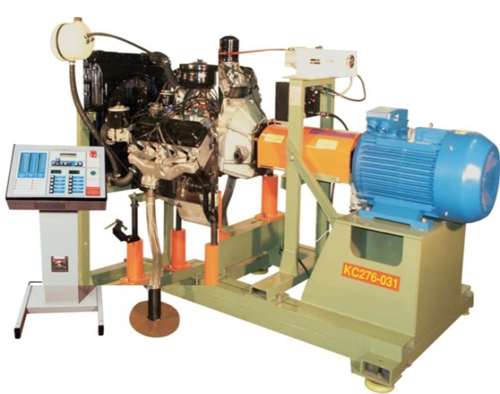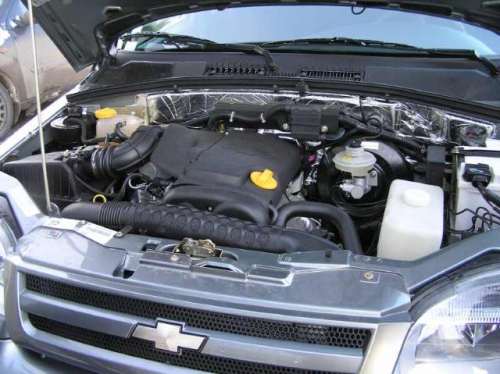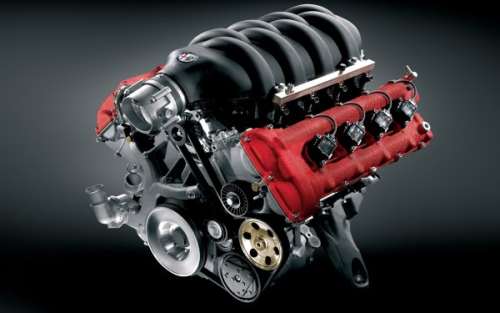The problem of running the engine sooner or later arises in front of any motorist. This may be due to the overhaul of the motor, the replacement of rings in it, or the purchase of a new car. By itself, this procedure is not difficult. But the running-in of the engine ultimately determines how it will be during further operation, and it must be approached with an understanding of the importance and necessity of such a process.
Why is a new engine running in?
Here you immediately need to define the terms and understanding of the situation. Under the concept of a new engine, any engine that has undergone any changes falls, whether it is even after boring cylinders, replacing rings or overhauling. The need for this approach is explained by the fact that the surface of any parts has a peculiar relief, consisting of tubercles and depressions.
Naturally, the microrelief does not match for different parts, when they work together, for example, the movement of rings along the walls of cylinders, the surfaces are paired with each other, tubercles are erased somewhere, and new depressions are formed somewhere. All this is accompanied by increased friction, the formation of metal microparticles and their entry into the oil, which leads to additional loads on the motor.
It is assumed that the engine run-in is carried out in a sparing mode with the maximum possible limitation of the resulting loads. For many years of operation of the internal combustion engine, the method of running in any engines, even diesel, even gasoline, has been worked out, both in winter and in summer. A correctly performed break-in procedure allows the motor to realize its full potential, while its violation reduces the life of the engines, and ultimately the machine.
Types and methods of running-in
To obtain a good result, the running-in of the engine after a major overhaul, or in any other similar case, is carried out in several stages and in a certain order. On each of them there are restrictions associated with the emerging loads for the engines.
Cold run-in of the engine after overhaul
Such an operation is best carried out in the conditions of a car repair enterprise or a large vehicle fleet. Cold break-in implies that everything is spinning at the engine, all its parts and components are operating normally, but the engine itself is not running. This mode allows you to implement a special stand. As a rule, a cold break-in is carried out after a major overhaul for the motor. To do this, the motor assembled after the overhaul or replacement of the rings is placed on the stand, and its crankshaft is connected to an external electric motor. 
In this case, coolant and oil are poured into the engine, and then a cold run-in is carried out, i.e. the crankshaft rotates under the action of an external electric motor, the pistons move, and the power unit itself remains idle. A similar procedure is carried out in the same way for gasoline and diesel engines.
Such cold running allows for the initial grinding of various new parts when they work together. However, as can be seen from the above description, a stand is needed for such a break-in, so it will be impossible to carry it out for the engine of a new car. In this case, you can use another technique - run in the engine of a new car when towing, for which no stand is required. A similar running-in of a new power unit, as well as a motor, after a major overhaul has been made to it, can also be performed in other cases when the stand is not available.
The run-in car is attached to the towing vehicle through a rigid hitch, candles are unscrewed from the engine of the new car, and the towing vehicle drags it for an hour with the gear engaged. Efforts through the wheels of a moving machine are transmitted to the power unit, and cold running is carried out.
Running in the engine of a new car
First of all, such a break-in is necessary for a new car, but it is advisable to carry it out in any other cases - after a major overhaul or replacement of rings. Do not forget the most important rule - reducing the loads for the new motor significantly prolongs its "life" and allows you to get everything that it is capable of. It is advisable to carry out the entire break-in procedure, regardless of whether it is carried out for a gasoline or diesel engine, in summer or winter, in parts. 
First start
Of course, this will not be the very first start of the engine, by now it has already worked at the factory for some time, will be tested as part of the car, and even, most likely, the new owner will be able to get from the car dealership to his garage or place permanent car parking. Nevertheless, this stage must be taken responsibly and simply acknowledge that the first engine start is being performed.
It is possible that when you have overhauled or start the engine after replacing the rings, you will indeed have the first start. In this case, you must follow the unwritten rule of experienced drivers - the engine of the car must “burn” a tank of gasoline at idle. Maybe it will not be a whole tank, but the fact must remain unchanged that for engines of any type, initially its operation for a long time should be idling.
This approach is due to the fact that the loads on the motor are already quite high, all moving parts rub against each other, which causes local overheating and, as a result, the appearance of metal microparticles in the lubricant. Idle operation reduces the resulting loads to a minimum, which is especially useful for engines after overhaul or replacement of rings.
The explanation is quite simple - in the conditions of the manufacturer, the quality of the parts used is guaranteed by the entire system operating at the plant, but in the conditions of a separate workshop using parts from third-party manufacturers, as well as in the case of purchasing the necessary spare parts from the outside, you can expect any deviations in new spare parts.
After the engine starts, it is necessary to constantly monitor the temperature in the cooling system and oil pressure (the light on the instrument panel should signal its absence).
During such a break-in, the engine cooling fan will turn on repeatedly, there is nothing wrong with that. To eliminate such overheating, you can open the hood, especially in winter this may be quite sufficient. Well, you should not use cheap and low-quality varieties of oil. 
Engine break-in on the first five hundred kilometers of run
When driving at first, it is necessary to avoid overloading the engine, for which purpose choose travel routes that do not require full engine load, and also exclude movement at high speed. The best option would be to drive in a gear less than necessary. For example, if on a normal, run-in car you would move in fourth gear, then for a new car or a car after repair, it is better to use third.
This practice will avoid overloading the motor and carry out its normal break-in.
Running in a new engine with a mileage of five hundred kilometers to two thousand
This is one of the final stages of engine break-in. A similar statement is true for a new and for a motor after repair. There are no special requirements for the operation and maintenance of the motor at this time. The main requirement remains the same - to avoid overloading, and in this way you can drive almost as usual, it is not recommended only to "spin" the engine more than three thousand revolutions. And do not forget about changing the oil filter and oil after a run of two thousand kilometers.
When does the break-in of a new engine end?
In general terms, the running-in of the power unit after the repair, or on a new car after a minimum mileage of two thousand kilometers, can be considered complete, the running-in itself is recognized as completed after ten thousand car mileage. However, the motor does not yet show all its capabilities.
So, on VAZ cars, and this is confirmed by practice, only after thirty to fifty thousand mileage, the engine, as they say, “opens up”. And if, when you press the gas pedal, you feel that you are pressed into the back of the seat, and a confident bass song of the engine is heard from under the hood, you can assume that everything is done correctly, and the engine will be your faithful assistant in any situation.
Running in the engine, even after a major overhaul, even for a new car, is an obligatory stage through which any car must go. If everything is done correctly, then the motor will serve for a long time, being reliable and demonstrating all its capabilities to the full, as intended by the developers.







